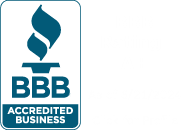Last updated on: June 11, 2025
Fundraising emails are a familiar feature of everyday life for most nonprofits. You have probably written or reviewed quite a number of them yourself.
The problem is that, even if you’ve written hundreds of them, it can be very hard to tell whether these emails are actually living up to their full potential, or if you’re leaving money on the table.
We’re going to look at the art of the fundraising request email, and give you some fundraising email example ideas and other suggestions to help you up your email game.
Create Different Email Lists
Unless your mailing list is very small, you should definitely be using it to create smaller lists that group similar donors together. Having specialized lists means you can send each donor a more customized fundraising email. This reduces the risk of donor fatigue and alienation.
Here are some popular ways to segment your donors:
- Donor capacity (e.g., big-dollar donors, small-dollar donors, etc.)
- Frequency of donations (e.g., donors who give often vs. infrequently)
- Donation recency (e.g., when did they last donate?)
- Target demographics (e.g., age, sex, location, student, etc.)
- Specialized topics of interest (e.g., donors who care about a specific campaign)
Set a Concrete and Attainable Goal
Every email should have a goal. Most donors are more likely to give money if there is a specific purpose in mind for that money. We recommend that you usually set a goal that is both concrete and attainable. You can stray from this when needed, but this should be the default for your fundraising emails.
|
Tip: You can phrase your fundraising target in terms of the number of donors you’re aiming for rather than a dollar figure. This is an option you should consider if you’ll be emailing donors who give very different amounts. |
Optimize Your Email Structure
What’s the difference between a sharp knife and a dull one? The dull one is a lot more work and a lot more frustrating. It’s crucial that you optimize your fundraising emails, just like you would sharpen a knife. This makes all the difference in the world! It’s probably the most important part of the whole process.
Subject LineThe subject line should either be right on the nose (e.g., “We Need $5,500 to Repair the Roof”), or it should lead into the ask through a clever hook or story that piques the reader’s interest (e.g., “It Started Raining on Our Bake Sale. We Were Indoors.”). To get more fundraising email example subject line ideas, study media headlines and ask yourself why they picked the headlines they did. |
|
Main Body Text

The main text of your fundraising email should be short and sweet. This is different from a newsletter email, which would normally be much longer. As a rule of thumb, we recommend you aim for 100 to 300 words.
Use this text to tell a story rather than just presenting the facts. The best way to do this is to contextualize your request: Why is the roof leaking? What work of yours is being disrupted? Has anyone set up a collection pond with koi in it?
Be sure to end your email with a strong call to action (e.g., “Help us get this roof fixed by the end of summer!”) and a donation button.
Formatting & LayoutWhen designing your fundraising email, break up the text by using techniques like small paragraphs, section dividers, bullet points, and a larger, boldface font for section titles. And, of course, use pictures and graphics generously! |
|
Get Fundraising Advice from BryteBridge Nonprofit Solutions
Many nonprofits struggle with sustainability, especially in the first few years when they’re just getting their feet under them. It also becomes an issue when an established nonprofit tries to grow, as well as in scenarios like an economic downturn or fierce competition from other organizations. In all of these cases, it’s crucial that the funding be there to meet operating costs.
At BryteBridge Nonprofit Solutions, our fundraising services can help you improve your fundraising email strategy, and our graphic design services can help you make those emails look great and click-worthy. We also offer many other services and solutions to help you launch, grow, and maintain your nonprofit organization.
Contact us today for more help with fundraising email examples. We’ve served over 30,000 people already, and we’d love to discuss how we can help your nonprofit meet its goals!
Fundraising emails are a familiar feature of everyday life for most nonprofits. You have probably written or reviewed quite a number of them yourself.
The problem is that, even if you’ve written hundreds of them, it can be very hard to tell whether these emails are actually living up to their full potential, or if you’re leaving money on the table.
We’re going to look at the art of the fundraising request email, and give you some fundraising email example ideas and other suggestions to help you up your email game.
Create Different Email Lists
Unless your mailing list is very small, you should definitely be using it to create smaller lists that group similar donors together. Having specialized lists means you can send each donor a more customized fundraising email. This reduces the risk of donor fatigue and alienation.
Here are some popular ways to segment your donors:
- Donor capacity (e.g., big-dollar donors, small-dollar donors, etc.)
- Frequency of donations (e.g., donors who give often vs. infrequently)
- Donation recency (e.g., when did they last donate?)
- Target demographics (e.g., age, sex, location, student, etc.)
- Specialized topics of interest (e.g., donors who care about a specific campaign)
Set a Concrete and Attainable Goal
Every email should have a goal. Most donors are more likely to give money if there is a specific purpose in mind for that money. We recommend that you usually set a goal that is both concrete and attainable. You can stray from this when needed, but this should be the default for your fundraising emails.
| Concrete: Instead of presenting your request in vague terms like “Anything helps,” think more along the lines of “We need $5,500 to repair the roof.” Attainable: People like to feel that their donation will make a meaningful difference. This means your fundraising target can’t be too high, since that makes donors feel helpless. But it also can’t be too low, or else donors might conclude that “somebody else” will take care of it. | Tip: You can phrase your fundraising target in terms of the number of donors you’re aiming for rather than a dollar figure. This is an option you should consider if you’ll be emailing donors who give very different amounts. |
Optimize Your Email Structure
What’s the difference between a sharp knife and a dull one? The dull one is a lot more work and a lot more frustrating. It’s crucial that you optimize your fundraising emails, just like you would sharpen a knife. This makes all the difference in the world! It’s probably the most important part of the whole process.
| Subject Line The subject line should either be right on the nose (e.g., “We Need $5,500 to Repair the Roof”), or it should lead into the ask through a clever hook or story that piques the reader’s interest (e.g., “It Started Raining on Our Bake Sale. We Were Indoors.”). To get more fundraising email example subject line ideas, study media headlines and ask yourself why they picked the headlines they did. | Tip: You can A/B test your emails using two different subject lines and send one version to half the donors on your list and the other version to the other half. |
Main Body Text

The main text of your fundraising email should be short and sweet. This is different from a newsletter email, which would normally be much longer. As a rule of thumb, we recommend you aim for 100 to 300 words.
Use this text to tell a story rather than just presenting the facts. The best way to do this is to contextualize your request: Why is the roof leaking? What work of yours is being disrupted? Has anyone set up a collection pond with koi in it?
Be sure to end your email with a strong call to action (e.g., “Help us get this roof fixed by the end of summer!”) and a donation button.
| Formatting & Layout When designing your fundraising email, break up the text by using techniques like small paragraphs, section dividers, bullet points, and a larger, boldface font for section titles. And, of course, use pictures and graphics generously! | Tip: Remember to optimize your email layout for mobile users as well! |
Get Fundraising Advice from BryteBridge Nonprofit Solutions
Many nonprofits struggle with sustainability, especially in the first few years when they’re just getting their feet under them. It also becomes an issue when an established nonprofit tries to grow, as well as in scenarios like an economic downturn or fierce competition from other organizations. In all of these cases, it’s crucial that the funding be there to meet operating costs.
At BryteBridge Nonprofit Solutions, our fundraising services can help you improve your fundraising email strategy, and our graphic design services can help you make those emails look great and click-worthy. We also offer many other services and solutions to help you launch, grow, and maintain your nonprofit organization.
Contact us today for more help with fundraising email examples. We’ve served over 30,000 people already, and we’d love to discuss how we can help your nonprofit meet its goals!



